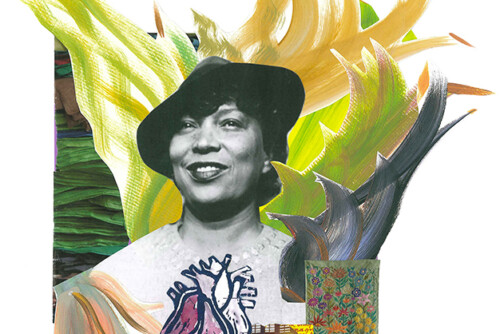The radical response
Many scholars in the field of pedagogy believe that the girls themselves should set the agenda for physical education. That is, a PE class should address adolescent girls’ most pressing concerns, which center on their own bodies and their lived experience of physical activity. 1 Here the aim is to teach girls “to resist devaluation,” to borrow Dr. Stimpson’s phrase. British and American pedagogists argue that girls should be taught critical thinking and media literacy skills (what they call “critical literacy” 2) and to resist the blandishments of advertisers and the female body ideal. 3 But I would emphasize that it is not only girls at whom this instruction should be targeted. Boys also need to hear these messages in order to understand the effects of the objectification of the female body. Since both girls and boys are complicit in producing and reproducing the behaviors that support the current gender order, both need to acquire critical literacy skills.
In this context, Oliver and Lalik provide a curriculum strand for girls’ physical education centering on the body, while Garrett outlines a rationale for such a strand. 4 Although a detailed accounting of their ideas is beyond the scope of this paper, I draw on their work by mentioning a few strategies for helping girls in analyzing discourses that shape female body practices. Parents, educators, and coaches can all contribute to changing the nature of the PE curriculum so that it is built to enable rather than disable the growth of female strength and self-sufficiency. The overarching purpose is to challenge the patriarchal discourses that currently obtain in physical education and to consider discourses more culturally relevant for girls, ones that affect their embodied subjectivity. In particular, girls need guidance and instruction – again the province of Artemis – about the female body: how girls who are physically active feel about their bodies, how girls who play sports are depicted in our culture, whether girls’ physical competence can positively affect their sense of self-esteem and self-worth. Girls (and boys) also need to understand how the beauty, fashion, and diet industries exploit women’s bodies for commercial purposes.
An article by Oliver and Lalik describes a girl-centered curriculum based on their research with teenage girls. When the authors allowed the girls’ interests to drive the course, girls picked topics relating to “fashion, fitness, shoes, cute boys, hairstyles, food, beauty, body products, articles [girls] read and people [they] admired.” 5 Oliver discovered that images were powerful ways of helping girls understand media messages, often more powerful than written texts. 6 Girls enjoyed looking at teen magazines and talking about the pictures they saw. They chose to express their ideas about these images using artistic portrayals and journal entries. They also talked about the images in small groups, composed photo essays, and examined school events such as a “beauty walk,” a type of beauty contest. Often their discussion spun into other areas such as teen pregnancy, sex, STDs, race issues, and more generally, things that made girls feel bad about themselves. 7
A truly radical approach would call for the revision of the entire educational endeavor. Like most of our social institutions, the institution of public education favors boys over girls. 8 All teachers – not just physical educators – would challenge inequitable practices that empower boys and men but disadvantage girls and women. Whether on a limited scale or a grand scale, this plan would require time for critical reflection about why certain activities may be empowering for one gender and disempowering for another. Although the task of teaching kids to think critically about the gender order seems daunting, even small steps in this direction would help.
Conclusion: The promise of Artemis
The promise of Artemis is the empowerment of girls. A major source of empowerment is the familiarity with one’s body, understanding its pleasures, its potential, and its limits. One of the major benefits of physical competence is self-knowledge. Boys learn this early on, girls, often not at all. I invoke Artemis, therefore, to support the development of girls’ self-knowledge as it enables self-sufficiency, strength, and independence.
Another source of empowerment is role models and mentors who can enact the values and behaviors that lead to success. Boys customarily have coaches, brothers, and fathers who perform this role. In addition, the media routinely publicize the achievements of men, especially male athletes. Girls have far fewer role models to choose from, since socialization into “female-appropriate” roles requires women to give up athletic pleasures or suffer homophobic assaults. Women for whom abandoning sport is unthinkable may be treated with contempt or ignored completely. Sports media silence the voices of female athletes by providing relatively little and poor-quality coverage of girls’ and women’s sports. 9 I invoke Artemis, therefore, to serve as both mentor and role model for girls, nurturing the expression of female physicality.
Yet another source of empowerment is social structures created to enable rather than disable the growth of self-worth. Boys learn their value through the social institutions that privilege them as a group, although they are also taught to believe in a meritocracy and not to recognize their unearned advantages. 10 In sports, in school, in the workplace, church, synagogue, or mosque, men and boys dominate. Women and girls, on the other hand, learn that their worth is based on something they cannot really control: their looks, their bodies, their youth. Social institutions like the educational system (with its “hidden curriculum”) and the media (with its insistence on a dangerously unhealthy body ideal) are more likely to disable than enable girls. I invoke Artemis, therefore, to create and provide alternatives to our current social arrangements.
Sport is the field on which gender battles are fought. The stakes at the material level may seem trivial, but the stakes at the symbolic level are not. These symbolic stakes include the empowerment of women and girls, the cessation of assaults on female subjectivity, and the end of the assumption of female inferiority and male superiority. Such symbolic stakes render the outcomes all the more consequential. Thank you, Dr. Stimpson, for providing the mythic context for an important present-day intervention.
- K. M. Armour, “The Case for a Body-Focus in Education and Physical Education,” Sport, Education and Society 4 (1999): 5-15; Bunyan et al., “An Investigation into the Perceptions of Body Image”; Garrett, “Negotiating a Physical Identity”; Gorely et al., “Muscularity”; A. M. Lee, K. Fredenburg, D. Belcher, and N. Cleveland, “Gender Differences in Children’s Conceptions of Competence and Motivation in Physical Education,” Sport, Education and Society 4 (1999): 161-174; Oliver, “Images of the Body.”[↑]
- Wright, cited in Oliver and Lalik, “Critical Inquiry,” 163.[↑]
- Bunyan et al., “An Investigation into the Perceptions of Body Image”; Garrett, “Negotiating a Physical Identity”; Gorely et al., “Muscularity”; Lee et al, “Gender Differences.”[↑]
- Oliver, “Images of the Body”; Oliver and Lalik, “Critical Inquiry”; Garrett, “Negotiating a Physical Identity.”[↑]
- Oliver and Lalik, “Critical Inquiry,” 173.[↑]
- Oliver, “Images of the Body.”[↑]
- Oliver and Lalik, “Critical Inquiry.”[↑]
- American Association of University Women, How Schools Shortchange Girls: A Study of Major Findings on Girls and Education (New York: Marlowe and Company, 1995); P. Orenstein, Schoolgirls: Young Women, Self Esteem, and the Confidence Gap (Boston: Anchor, 1995); M. Sadker and D. Sadker, Failing at Fairness: How Our Schools Cheat Girls (New York: Scribner, 1995).[↑]
- M. C. Duncan, M. A. Messner, and N. Willms, Gender in Televised Sports: News and Highlight Shows, 1989-2004, Amateur Athletic Foundation of Los Angeles, 2005, http://www.aafla.org/9arr/ResearchReports/tv2004.pdf. [↑]
- P. McIntosh, “White Privilege and Male Privilege: A Personal Account of Coming to See Correspondences through Work in Women’s Studies,” Working Paper 189 (Wellesley, MA: Wellesley Centers for Women, 1988).[↑]



